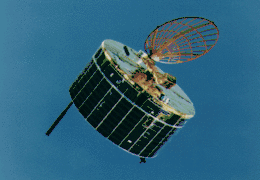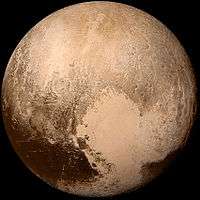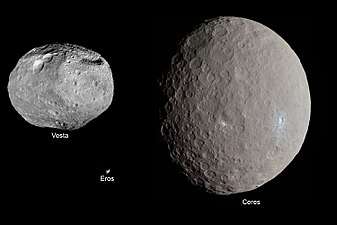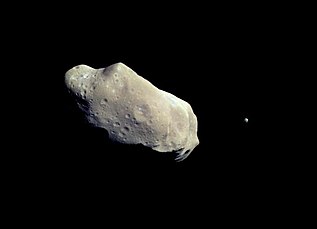Sakigake
Sakigake (さきがけ, lit. "pioneer" or "pathfinder"), known before launch as MS-T5, was Japan's first interplanetary spacecraft, and the first deep space probe to be launched by any country other than the USA or the Soviet Union. It aimed to demonstrate the performance of the new launch vehicle, test the schemes of the first escape from the Earth gravitation for Japan on engineering basis, and observe space plasma and magnetic field in interplanetary space. Sakigake was also supposed to get references for scientists. Early measurements would be used to improve the mission of the Suisei probe several months later.
 Sakigake spacecraft | |
| Mission type | Comet flyby |
|---|---|
| Operator | ISAS |
| COSPAR ID | 1985-001A |
| SATCAT no. | 15464 |
| Mission duration | 10 years and 10 months (launch date to date of last data transmission) |
| Spacecraft properties | |
| Launch mass | 138.1 kilograms (304 lb) |
| Start of mission | |
| Launch date | January 7, 1985, 19:27 UTC |
| Rocket | Mu-3SII |
| Launch site | Kagoshima |
| End of mission | |
| Last contact | Data: November 15, 1995 Beacon: January 8, 1999 |
| Orbital parameters | |
| Reference system | Heliocentric |
| Perihelion altitude | 0.92 astronomical units |
| Aphelion altitude | 1.15 astronomical units |
| Inclination | 0.07 degrees |
| Period | 382.8 days |
| Flyby of 1P/Halley | |
| Closest approach | March 11, 1986, 04:18 UTC |
| Distance | 6,990,000 kilometres (4,340,000 mi) |
Sakigake was developed by the Institute of Space and Astronautical Science for the National Space Development Agency (both of which are now part of the Japanese Aerospace Exploration Agency, or JAXA). It became a part of the Halley Armada together with Suisei, the Soviet/French Vega probes, the ESA Giotto and the NASA International Cometary Explorer, to explore Halley's Comet during its 1986 sojourn through the inner Solar System.
Design
Unlike its twin Suisei, it carried no imaging instruments in its instrument payload.
Launch
Sakigake was launched January 7, 1985 from Kagoshima Space Center by M-3SII launch vehicle on M-3SII-1 mission.
Halley encounter
It carried out a flyby of Halley's Comet on March 11, 1986 at a distance of 6.99 million km.
Giacobini-Zinner encounter
There were plans for the spacecraft to go on to an encounter with 21P/Giacobini-Zinner in 1998 but the flyby had to be abandoned due to lack of propellant.
End of mission
Telemetry contact was lost on November 15, 1995, though a beacon signal continued to be received until January 7, 1999.[1][2]
References
- "Sakigake - Japan ISAS Halley's Comet Mission Sakigake". Space.about.com. Retrieved 2010-02-01.
- "Sakigake – NASA Master Catalog". Nssdc.gsfc.nasa.gov. Retrieved 2010-02-01.
External links
- Sakigake
- Sakigake Mission Profile by NASA's Solar System Exploration
- Halley's Comet Flyby
- Sakigake Mission Comet Halley Data Archive at the NASA Planetary Data System, Small Bodies Node



